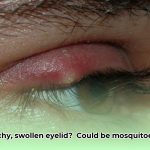Huntsman spiders, with their large size and swift movements, often inspire more fear than their bites warrant. While a bite can be painful, it’s typically no more harmful than a bee sting for most people. This guide provides practical advice and evidence-based information to help you identify, treat, and prevent huntsman spider bites.
Is it a Huntsman?
Huntsman spiders are large, fast, and often hairy, sometimes mistaken for tarantulas. Unlike tarantulas, they have a flatter body and splayed, crab-like legs. They don’t spin webs, preferring to hunt their prey. They favor dark, hidden spaces like under loose bark, in crevices, and occasionally inside homes. Compare your spider sighting with reputable online image resources to confirm identification.
First Aid for Huntsman Bites
If you believe a huntsman spider has bitten you, follow these steps:
- Cleanse: Gently wash the bite area with soap and water to prevent infection.
- Cool: Apply a cold pack (or ice wrapped in a cloth) to reduce swelling and numb pain.
- Elevate: If the bite is on a limb, elevate it to minimize swelling.
- Pain Relief: Over-the-counter pain relievers like ibuprofen or acetaminophen can help manage discomfort.
Symptoms and Medical Care
Most huntsman bites cause localized pain, swelling, redness, and possibly itching. Some individuals might experience mild nausea or a headache, but severe reactions are rare. Symptoms typically subside within a few hours or days.
Seek immediate medical attention if you experience:
- Difficulty breathing
- Spreading rash
- Dizziness
- Significant swelling beyond the bite area
- Signs of infection (increased redness, pus, fever)
While home remedies like aloe vera gel might offer some comfort, they should not replace medical advice if symptoms worsen or persist. A doctor can assess the bite and provide appropriate treatment, which might include stronger anti-inflammatory medication or antihistamines for allergic reactions.
Debunking the Myths
| Myth | Fact |
|---|---|
| Huntsman spiders are deadly. | Their venom is not lethal to humans. Bites are comparable to bee stings in terms of pain and effects. |
| They aggressively attack humans. | Huntsman spiders are shy and prefer to avoid people. Bites typically occur when they feel trapped or accidentally disturbed. |
| Huntsman spider bites cause necrosis | Necrosis (tissue death) is not a typical symptom of a huntsman spider bite. This is more characteristic of brown recluse spider bites. |
Preventing Bites
Reduce your chances of a huntsman encounter by:
- Shaking out clothing and shoes before wearing them, especially if stored in undisturbed areas.
- Sealing cracks and crevices in your home.
- Decluttering to minimize hiding spots.
- Wearing gloves when working outdoors in areas where huntsman spiders might live.
Ongoing Research and Uncertainties
While current research suggests huntsman spider venom poses minimal risk to humans, scientific understanding is constantly evolving. Ongoing studies are exploring the venom’s properties and potential medical applications. It’s important to acknowledge that not all species of huntsman spiders are well studied, and more research is needed to fully understand the long-term effects of their bites.
Frequently Asked Questions (FAQ)
- How long does the pain from a huntsman spider bite last? Pain typically subsides within a few hours, similar to a bee sting. However, some individuals may experience lingering discomfort for a few days.
- Are home remedies effective for treating huntsman spider bites? While some home remedies might provide temporary relief, they should not replace medical advice. Consult a healthcare professional for proper treatment, especially if you have concerns or experience worsening symptoms.
- How can I tell the difference between a huntsman spider bite and other spider bites? Refer to the table above to compare the characteristics of huntsman bites with those of other spiders. A key differentiator is the absence of necrotic tissue, often seen in brown recluse bites. If you are unsure, it’s crucial to seek medical advice.
- What is the latest research on huntsman spider venom? Some preliminary research suggests potential applications of huntsman spider venom in pain management and other areas. However, further studies are needed to confirm these findings.
Conclusion
Huntsman spiders, despite their intimidating appearance, pose a minimal threat to humans. By understanding their behavior, recognizing their bites, and following the appropriate first aid steps, you can manage any potential encounters calmly and effectively. Remember to seek medical attention if you experience any severe or unusual symptoms.
Disclaimer: This article provides general information and should not be considered medical advice. Always consult with a qualified healthcare professional for any health concerns or before making any decisions related to your health or treatment.
- Wellness Fair Ideas for Work to Boost Employee Wellbeing - December 15, 2025
- Affordable Employee Wellness Fair Ideas for Any Budget - December 14, 2025
- Employee Wellness Programs Strategically Benefit Employee Health And Retention - December 13, 2025
















